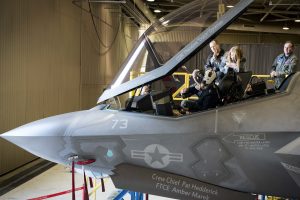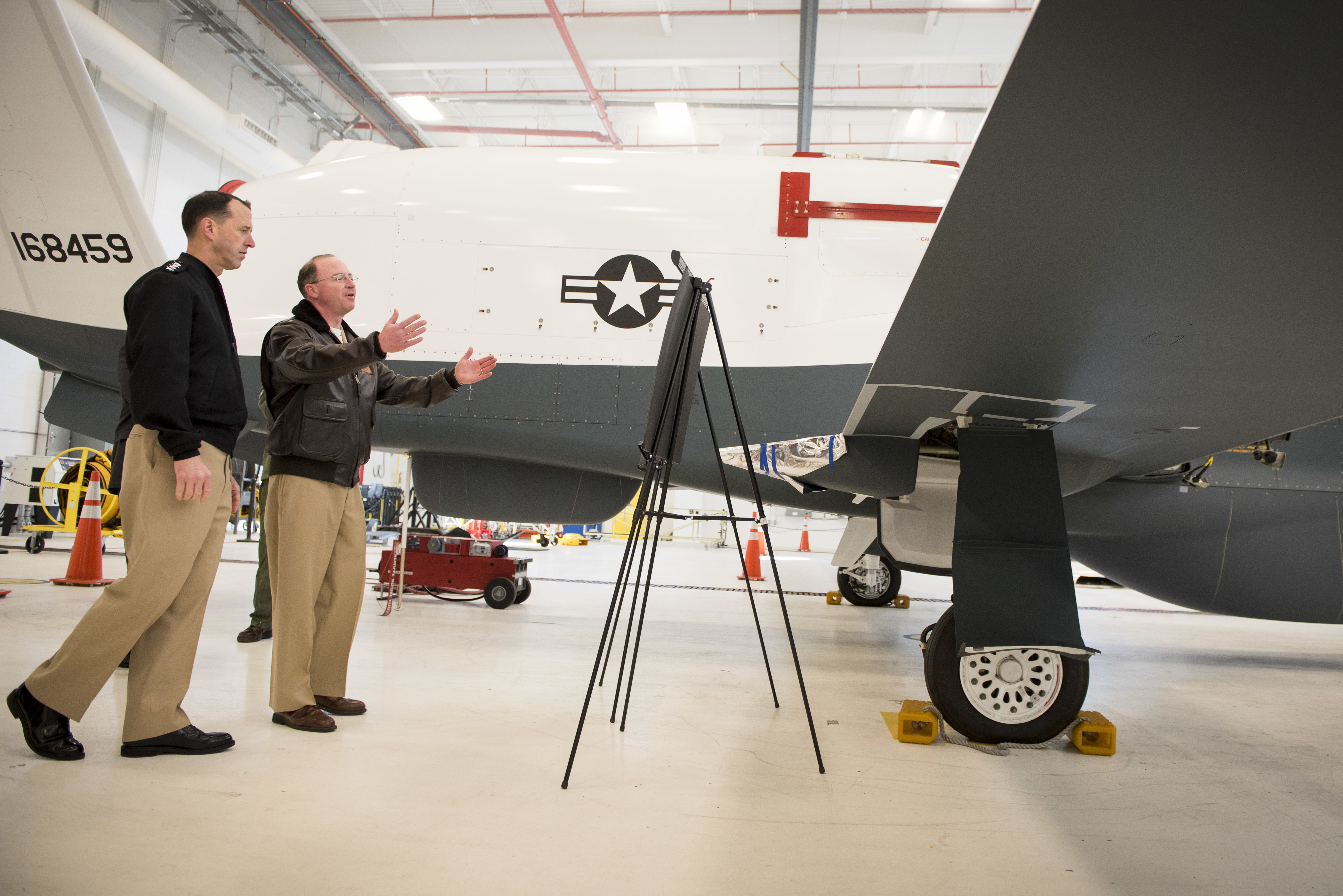2017-12-18 Last year, the Chief of Naval Operations had enough with the growing emphasis on what our adversary’s might be able to do as opposed to focusing on U.S. and allied modernizations to support the freedom of action of the liberal democracies.
Adm. John Richardson in October 2016 argued: “We’re going to scale down the mention of A2AD (Anti-Access/Area Denial).
“It’s a term bandied about pretty freely and lacks the precise definition it probably would benefit from, and that ambiguity sends a variety of signals. Specifics matter.”
“The concept is not anything new – the history of warfare is all about adversaries seeking to one-up each other.
“Use of the word “denial is too often taken as a fait accompli when I fact it really describes an aspiration.
“The reality is far more complex.”
https://www.defensenews.com/naval/2016/10/04/cno-bans-a2ad-as-jargon/
Richardson said seeing potential conflict through just the proliferation of guided weapons or a fortress of “red arcs” around mainland China in which the U.S. could not operate was also less than helpful.
“It’s also true that these systems are proliferating, they’re spreading but the essential military problem that they represent is largely the same that we’ve appreciated and understood for sometime.”
 PATUXENT RIVER Md. (Jan. 13, 2016) Chief of Naval Operations (CNO) Adm. John Richardson sits in the cockpit of an F-35C Lightning II carrier variant joint strike fighter at Naval Air Station Patuxent River. Richardson also held an all-hands call, toured facilities and viewed aircraft and systems including the E-2D Advanced Hawkeye and MQ-4C Triton unmanned aircraft system. (U.S. Navy photo by Mass Communication Specialist 1st Class Nathan Laird/Released)
PATUXENT RIVER Md. (Jan. 13, 2016) Chief of Naval Operations (CNO) Adm. John Richardson sits in the cockpit of an F-35C Lightning II carrier variant joint strike fighter at Naval Air Station Patuxent River. Richardson also held an all-hands call, toured facilities and viewed aircraft and systems including the E-2D Advanced Hawkeye and MQ-4C Triton unmanned aircraft system. (U.S. Navy photo by Mass Communication Specialist 1st Class Nathan Laird/Released)
“It doesn’t mean that they don’t present a challenge but we fixate on A2/AD we’re going to miss the boat on the next challenge. We’ll fail to consider that thing right around the corner that will entail a fundamental shift and takes the contest and competition to the next level.”
https://news.usni.org/2016/10/03/cno-richardson-navy-shelving-a2ad-acronym
Earlier this year, Jyri Raitasalo, a lieutenant colonel, docent of strategy and security policy at the Finnish National Defence University and a member of the Royal Swedish Academy of War Sciences, made a similar case as did the CNO.
His assessment was published on June 16, 2017 and posted on the Royal Swedish Academy of War Sciences website.
According to the mainstream western strategic narrative, Russia has since 2014 erected multiple Anti-Access Area Denial (A2AD) exclusion zones or “bubbles” around Europe and the Middle-East.
These bubbles supposedly hinder or even prevent western military action and troop deployments during a potential military crisis between the West (read: NATO) and Russia. Symbols of this new Russian A2AD policy can be found in modern long-range weapon-systems like the S-400 Triumf long-range surface to air missile system, SS-26 Stone (aka Iskander) short range ballistic missile system or the K-300P (aka Bastion-P) mobile coastal missile system.
It is true that Russia has been developing and fielding new long-range weapon systems lately. In addition it is true that these would pose a challenge to NATO forces in the case of a military conflict between Russia and the West.
However, I argue that the recent western A2AD discourse is as much a reflection of two decades of outright neglect concerning the development of real high-end military capability in Europe and within NATO against advanced state-based adversaries than it is about Russia’s new capabilities.
Russia has not developed a new brilliant policy or doctrine – either on the strategic or operational levels – that corresponds with the western notions of its A2AD capabilities.
Rather, in many cases Western states are projecting their own capability shortfalls onto Russia – shortfalls that are a product of over-focusing for almost two decades on multinational expeditionary military operations against weak third rate adversaries in the name of stability operations, military crisis management and counterinsurgency operations.
Bluntly put, for two decades many western states have focused on marginal military threats out-of-area to guide the maintenance and development of their militaries.
Now that Russia has brought back the traditional great-power perspective to international politics and military affairs in Europe and in the close proximity of Europe, many Western states have become surprised as they lack the capabilities – nationally and in many cases even in a multinational setting – to deter or fight conventional large-scale war. A2AD has become one western tool to manage the confusion and surprise that Russia’s actions have caused within the West.
Western A2AD narrative reveals how hollow many European military forces have become – when looked from the perspective of high-end warfighting. By deploying modern military systems to advance its interests Russia is allegedly doing something strategically brilliant and new. Within the West this deteriorating security situation has been called “the new normal”. Looking at the situation today it might be better described as the “old normal” – recognizing how great powers sooner or later drift to the opposing sides in international affairs. The Cold War era great-power confrontation was a good example of that.
If anything, the two decades of the post-Cold War era (1990-2013) could in retrospect be called “the new abnormal”, at least according to the Western reading of this era. It was supposed to be a non-zero-sum world of managing common security threats in a globalizing and increasingly interdependent world. Former adversaries – Russia included – were engaged and cooperated with. This era coincided with the post-Cold War American unipolar moment – two decades of sheer western (read: American) dominance in international politics.
The events already in Georgia (2008) – but at the latest in Ukraine (2014) – brought a quick end to this western post-Cold war era strategic myth. Unfortunately during this 20+ years many western (read: European) states lost a good part of their military capabilities and the associated military ethos related to national and territorial defence by military forces.
The ongoing western A2AD discourse needs to be understood against this western predicament: having given up many of the high-end warfighting skills and capabilities, and faced with the resurgent (but very traditionally behaving) great-power Russia, western states need something that can explain away the conceptual surprise and the associated challenge that Russia’s actions have caused.
The western A2AD discourse has served precisely this function – it has facilitated the western states to come to terms with Russia’s confrontational actions, which have been contradictory to the post-Cold War era western outlook to international politics and strategic affairs.
At the heart of this western A2AD narrative are Russia’s new long-range military systems. They make easy headlines and their destructive potential can be easily represented by drawing circles on the map of Europe. As was reported in March 2015,
“The Iskander missiles deployment to Kaliningrad reflects Moscow’s readiness to raise the ante in response to NATO moves to deploy forces closer to Russia’s borders. The missiles, which are capable of hitting enemy targets up to 500 kilometers (310 miles away) with high precision, can be equipped with a nuclear or a conventional warhead. From Kaliningrad, they could reach several NATO member states.”
This kind of Iskander (or other) missile deployment news, focusing on the technical aspects of military systems, bring almost nothing new to the strategic equation in Europe. Russia (and the Soviet Union before its demise) has for decades had the possibility to target any city or military facility with conventional or nuclear warheads. Also, deploying mobile platforms has a sound military logic – mobile platforms are supposed to be moved and deployed where needed.
The down side of the western A2AD narrative is located in the fact that it has actually empowered Russia at the expense of the West. Today we face a situation where western media and even western statesmen react with frenzy whenever Russia deploys new military systems and by so doing creates new or reinforces its existing “A2AD bubbles”.
Iskander and S-400 Triumf launchers have become a way for Russia to communicate non-verbally its discontent about western actions. Moreover, Russia does not even have to actually deploy any “A2AD systems” in order to make a point. It is enough for Russia to declare its intent to deploy these systems. After such a declaration, Western media is guaranteed to deliver the message to a worldwide audience.
As an example, the Express published a story in November 2016 on an “ACT OF WAR: Putin deploys nuclear missiles IN EUROPE as he admits FURY at Nato expansion”. And the essence of the story was told upfront in the beginning of the piece: “AN ALARMING signal Vladimir Putin is preparing for war has come after his top military chiefs revealed the Kremlin is deploying much-feared Iskander and S-400 long-range missile defence systems deep inside Europe.”
The above-mentioned article relies on the mainstream way in the West to conceptualize one’s adversary’s military capability: focus only on the technical aspects of modern weapon-systems without any reflection about the dozens of ways to neutralize their “edge”.
For example, to thwart the combined threat posed by ballistic missiles and long-range air defence missiles – what in the western strategic parlance is called A2AD threat” – the following counter-measures can be used:
International cooperation, alliance-politics (expanding the area of operations, collective action/defence)
- Intelligence, Surveillance, Reconnaissance (analyze the threat, early warning),
- Decentralization (multiply the number of targets, saturate the battlefield),
- Deception (confuse the adversary),
- Fortification (hardening targets to minimize losses),
- Maneuver (difficulties for opponent to locate troops/systems),
- Protecting the troops/systems (e.g. missile defence),
- Taking out the threat directly (long-range fires, electronic warfare, special operations forces, cyber capabilities),
- Minimizing the threat indirectly (degrading the opponents ability to control its systems, e.g. destroying C2-assets or degrading its electricity production),
- Developing defensive systems (e.g. flares, chaff, HARMs, jammers, standoff capability, stealth, passive sensors), and
- Developing TTPs (how to operate in a high-risk environment, e.g. tactical maneuver).
The list above is only indicative of the vast pool of strategic, operational, tactical and technical level means to counter the so-called A2AD systems or bubbles. But the bottom line is clear: focusing solely on the technical and/or tactical aspects of adversary’s military systems may make good headlines, but it does not by itself facilitate the formulation of sound strategy.
In addition, it should be noted that deploying military assets – any military assets – to the previously mentioned Kaliningrad is a real problem for Russian military planners or commanders, at least when the shooting war starts. Kaliningrad is a small exclave, surrounded by NATO member-states. Defending Kaliningrad without going nuclear is almost unimaginable.
The alternative for Russia would be a large-scale conventional military push west (and north from Belarus) in order to pre-empt any future military operation taking place from the area of the Baltic states. Even this would not be sufficient to secure the Kaliningrad area, as NATO would be able to stage forces using its strategic depth in Western Europe until sufficient reinforcements in terms of troop numbers and capabilities had arrived.
Much of the western A2AD narrative is located on the military-technical or tactical levels. It almost completely bypasses the operational, military strategic and grand strategic level thinking and logics. Being able to pinpoint A2AD bubbles on the map – containing some sophisticated long-range military systems – does not a good strategy make.
We would like to thank our partner, Hans Tino Hansen, for bringing this article to our attention.
If you would like to comment on this article, please see the following:


